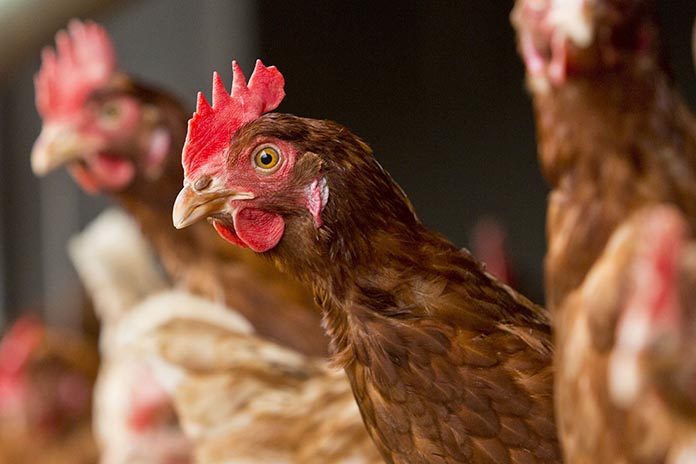
Close to 10 years ago, Hendrix Genetics Layers started remodeling their breeding program. A range of restructuring activities, directly affecting the breeding operations made it possible that from 2008 onwards, all pure line hens are kept until the age of 100 weeks without inducing a period of molt.
The mission of Hendrix Genetics Layers states: “Breeding for 500 first quality eggs by 2020”. With this mission, Hendrix Genetics Layers strongly supports the improvement of efficiency and sustainability, as the economic life of laying hens will increase progressively. Especially because simultaneously huge focus is put on consistent high egg quality – being strong shells, nice color and excellent internal quality (Haugh Units) towards later in life – combined with maximum lifetime livability.
Trend analyses of laying performance has shown that hens bred by the Hendrix Genetics Layer breeding company were ready to make the next step to go to a 100-weeks cycle. Where different families showed 25% variation in production back in 1992 at 60 weeks, in 2008 the spread between families at 75 weeks had been reduced to only 10%.
In order to be able to continue to breed for increased persistency, 25 additional weeks are added to the laying cycle (to a total of 100 weeks now). This extension of the laying cycle has resulted again in 30% spread in production at 100 weeks between the best and the worst families.
Together with the opportunity to add additional measurements (like egg weight, color and strength) after 90 weeks of age, makes the additional efforts really worthwhile and beneficial to commercial egg producers and all other parties in the egg value chain. This both for cage- and cage-free environments, and table egg- and egg-processing markets.
The complete breeding program
Hendrix Genetics Layers’ breeding program consists of both Pure line breeding to 100 weeks plus extensive pedigreed crossbred progeny field testing. All this combined with tripled egg research capacity and implementation of Genomic Selection, allows Hendrix Genetics Layers to fully maximize the genetic progress in increased number of first quality eggs per hen housed with increased efficiency.
Results obtained in the Pure Lines and those of commercial flocks in the field show that egg producing flocks will really go to extended laying cycles and that 500 first quality eggs per hen housed are feasible in due time. In fact, some flocks have shown that the Genetics are ready to go to 100 weeks, producing at least 500 eggs per hen. And there is more to come, which is still in the Genetic Pipe Line.
Prolonged cycles of layer flocks: new research questions arise.
Hendrix Genetics Layers is involved in feed- and nutrient-research how to feed ageing flocks optimally, supports research in immune-response of older hens, how vaccines can help to improve protection towards 100 weeks and is actively looking for ways to improve general immunity through genetics.
Hendrix Genetics Layers has the genetic program, the research and the production facilities in place to continue to supply the egg producers with the most persistent and profitable hens worldwide.
Source: MPF 2018 Symposium, Frans van Sambeek, Director R&D at Hendrix Genetics Layers.

















